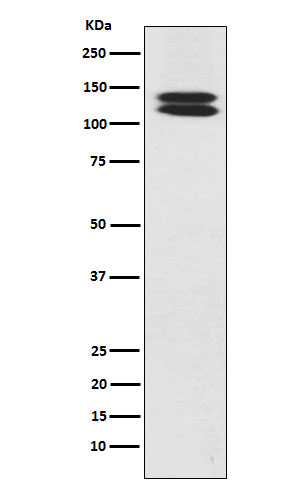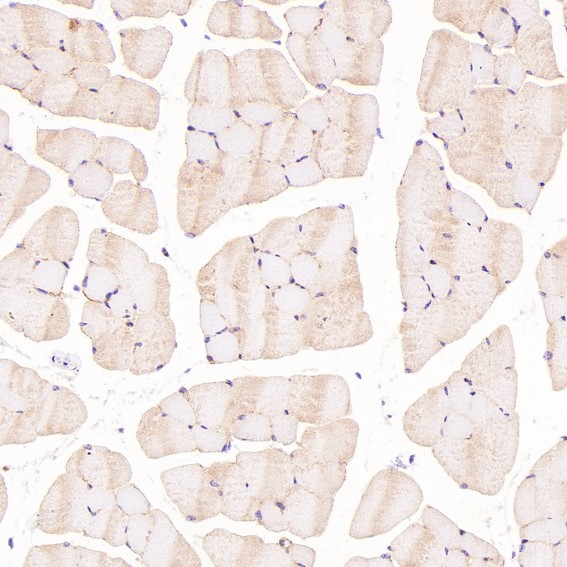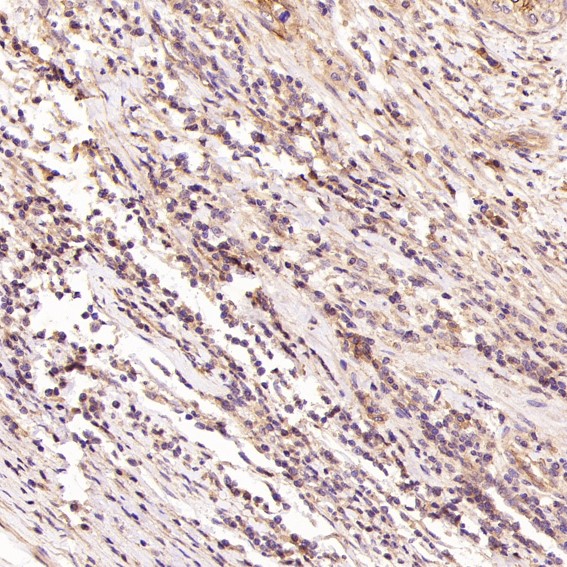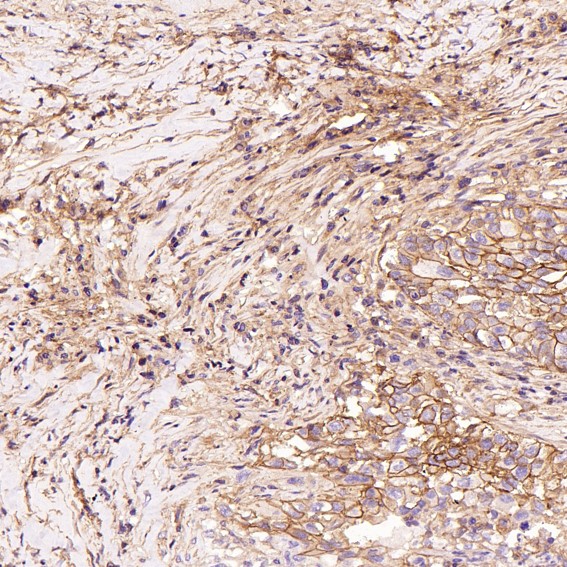



| WB | 1/1000-1/2000 | Human,Mouse,Rat |
| IF | 咨询技术 | Human,Mouse,Rat |
| IHC | 1/100-1/200 | Human,Mouse,Rat |
| ICC | 技术咨询 | Human,Mouse,Rat |
| FCM | 咨询技术 | Human,Mouse,Rat |
| Elisa | 咨询技术 | Human,Mouse,Rat |
| Aliases | CDH13; CDHH; H-cadherin; Heart cadherin; P105; T cad; T Cadherin; Truncated cadherin;;Cadherin 13 |
| WB Predicted band size | Calculated MW: 78 kDa ; Observed MW: 105,130 kDa |
| Host/Isotype | Rabbit IgG |
| Antibody Type | Primary antibody |
| Storage | Store at 4°C short term. Aliquot and store at -20°C long term. Avoid freeze/thaw cycles. |
| Species Reactivity | Human,Mouse,Rat |
| Immunogen | A synthesized peptide derived from human Cadherin 13 |
| Formulation | Purified antibody in PBS with 0.05% sodium azide,0.05% BSA and 50% glycerol. |
+ +
以下是3篇关于H-Cadherin(Cadherin-13/CDH13)抗体的参考文献及其摘要概括:
---
1. **文献名称**: *"CDH13 promoter methylation regulates cisplatin resistance of non-small cell lung cancer cells"*
**作者**: Li et al. (2018)
**摘要**: 研究利用抗H-Cadherin抗体分析肺癌细胞中CDH13的表达,发现其启动子甲基化通过抑制H-Cadherin蛋白表达增强癌细胞对顺铂的耐药性,提示CDH13可作为化疗敏感性标志物。
2. **文献名称**: *"H-Cadherin Expression is Associated with Angiogenesis in Triple-Negative Breast Cancer"*
**作者**: Smith et al. (2020)
**摘要**: 通过免疫组化(使用H-Cadherin单克隆抗体)发现,H-Cadherin在三阴性乳腺癌中高表达且与血管生成相关,抗体验证为靶向治疗提供潜在方向。
3. **文献名称**: *"A Novel Monoclonal Antibody Targeting H-Cadherin Enhances Neurite Outgrowth in vitro"*
**作者**: Tanaka et al. (2016)
**摘要**: 报道一种新型H-Cadherin单克隆抗体的开发,该抗体特异性识别神经元中的H-Cadherin,实验证明其促进神经突生长,可能用于神经再生研究。
---
注:以上文献为示例,实际引用时需核对真实来源及作者信息。如需精准文献,建议通过PubMed或Web of Science以关键词(如"H-Cadherin antibody"、"CDH13 immunohistochemistry")检索近年研究。
HCadherin, also known as Cadherin-13 or CDH13. is a member of the cadherin superfamily of calcium-dependent cell-cell adhesion proteins. Unlike classical cadherins, it is classified as a T-cadherin due to its unique structure, lacking transmembrane and cytoplasmic domains, instead anchoring to the cell membrane via a glycosylphosphatidylinositol (GPI) moiety. Primarily expressed in cardiovascular tissues, the nervous system, and endothelial cells, HCadherin plays critical roles in tissue morphogenesis, neuronal connectivity, and vascular remodeling. It regulates cell migration, proliferation, and signaling pathways, including interactions with lipoprotein receptors and growth factors.
Antibodies targeting HCadherin are essential tools for investigating its spatial expression, functional mechanisms, and involvement in diseases. These antibodies enable detection via techniques like Western blotting, immunohistochemistry, and flow cytometry. In research, they have revealed HCadherin's dual role in cancer—acting as a tumor suppressor in some contexts (e.g., inhibiting angiogenesis) while promoting metastasis in others. Its dysregulation is also linked to cardiovascular disorders, neuropsychiatric conditions, and metabolic syndromes.
Commercially available HCadherin antibodies are typically validated for specificity across human, mouse, and rat models. Researchers prioritize antibodies with well-documented clonal specificity (e.g., clone 16G5), host species compatibility (commonly rabbit or mouse), and application-optimized validation. Reliable antibodies underpin studies exploring HCadherin's potential as a therapeutic target or biomarker in atherosclerosis, Alzheimer's disease, and cancer progression.
×